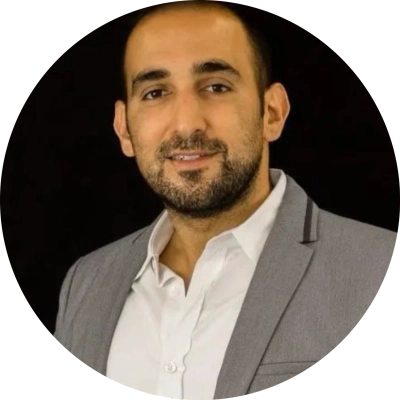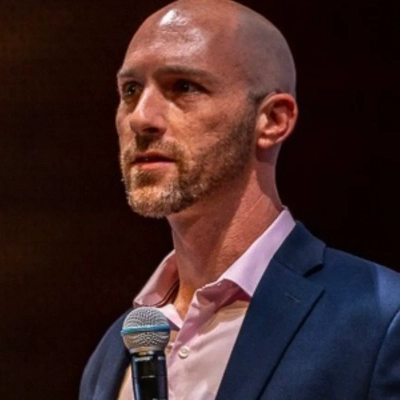25 Effective Risk Management Strategies for Your Business
Effective risk management is crucial for the success and longevity of any business. This comprehensive guide presents expert-backed strategies to help safeguard your company against potential threats and uncertainties. From building business continuity plans to implementing robust security measures, discover practical approaches that can strengthen your organization’s resilience in an ever-changing business landscape.
- Build a Business Continuity Plan
- Diversify Carriers for Insurance Coverage
- Conduct Annual Risk Reality Checks
- Implement 3-2-1 Backup Rule
- Test Technology Internally Before Installation
- Rotate Menu Items for Flexibility
- Develop Multi-Tier Sourcing System
- Run Scenario-Based Cash Flow Planning
- Perform Pre-Job Risk Assessments
- Map Out Multiple Future Scenarios
- Create Resilience Through Scenario Planning
- Prepare Flexible Indoor Event Alternatives
- Proactively Track Alumni Recovery Progress
- Maintain 13-Week Cash Flow Spreadsheet
- Invest in Dedicated In-House Medical Team
- Anticipate Market Trends Through Forecasting
- Use Comprehensive Crisis Assessment Protocols
- Test New AI Tools in Controlled Pilots
- Diversify Client Base Across Industries
- Triangulate Data Before Property Acquisition
- Conduct Pre-Mortems for Major Launches
- Document All Processes and Frameworks
- Practice Proactive Transparency with Stakeholders
- Build Robust Security and Compliance Measures
- Diversify Traffic Sources for Stability
Build a Business Continuity Plan
Most small and mid-sized businesses don’t wake up in the morning worrying about a hurricane, ransomware attack, or the sudden resignation of a key leader—until it happens. That’s why my go-to risk management strategy is deceptively simple: build a Business Continuity Plan (BCP), and revisit it every year like a dentist appointment you can’t skip. It’s not glamorous, but it works.
A strong BCP is your business’s “what if” playbook. What if your cloud provider goes down? What if your top supplier can’t deliver? What if your Wi-Fi router decides to retire early on payroll day? By walking through these scenarios in advance, you take uncertainty out of the driver’s seat. Instead of scrambling, your team has a clear roadmap: who does what, when, and with which tools.
Our team once had a vendor miss a deadline because of a regional power outage. Because we had mapped out alternate suppliers in our continuity plan, we kept our commitments without missing a beat. In another exercise, we discovered that only one person knew how to reboot the office router. Lesson learned: write it down, don’t rely on anyone’s memory.
The beauty of this approach is that it scales to SMB realities. You don’t need a “war room” full of consultants. Start with a simple table: critical functions, who owns them, and how long you can afford to be down before real damage is done. From there, layer in preventive steps (like backups, insurance, or cross-training staff) and emergency communication templates. Think of it as rehearsal for the unexpected.
My philosophy is simple: you don’t manage risk by predicting the future; you manage it by preparing your team to flex when the future misbehaves. The payoff? Fewer surprises that turn into crises. I’ve seen companies shave days off their recovery time simply because they had already agreed on where to meet, how to log into systems remotely, or which vendor to call first. That foresight doesn’t just prevent losses—it builds confidence across the whole team.
The real magic of a continuity plan isn’t the binder on the shelf—it’s the conversation it forces your team to have: What’s changed since last year? What do we rely on that we haven’t even noticed? That curiosity is what keeps a business resilient.
 Cloe Guidry
Cloe Guidry
Founder & CEO, hireground.io
Diversify Carriers for Insurance Coverage
As an independent insurance agent working with multiple carriers, I’ve learned that carrier concentration is our biggest risk. If one insurance company decides to exit our market or dramatically changes their underwriting, we could lose a huge chunk of business overnight.
My specific strategy is “carrier diversification with overlap coverage” – I maintain relationships with at least 3-4 different insurance companies for each type of coverage we offer. This means if State Farm suddenly stops writing new commercial policies in California, I can immediately move those clients to Travelers or another carrier without losing the business.
This strategy saved us significantly when one of our major carriers tightened their commercial property underwriting after the recent California wildfires. Instead of scrambling to place $200K+ in annual premiums elsewhere, we already had established relationships and could transition clients seamlessly. Our retention rate stayed above 94% during that transition.
The overlap strategy also helps during renewal season when carriers become aggressive with rate increases. Having multiple options means I can shop around and keep clients satisfied with competitive pricing, rather than being limited to whatever one carrier decides to charge.
 Patrick Caruso
Patrick Caruso
President, Caruso Insurance Service
Conduct Annual Risk Reality Checks
After 25+ years in insurance, I’ve seen how inadequate coverage destroys businesses overnight. My specific risk management strategy is conducting annual “risk reality checks” where we sit down with clients and walk through actual scenarios that could hit their specific business type.
Here’s what makes this work: Instead of just selling standard policies, we dig into the unusual situations that could bankrupt them. I had a home-based bakery client who thought basic homeowners coverage would protect her business. During our risk check, we found she was completely exposed if a customer got food poisoning – homeowners insurance doesn’t cover business liability at all.
We implemented a Business Owner’s Policy with professional liability add-ons for $180/month. Six months later, she faced a lawsuit from a catering event gone wrong. The coverage saved her from a $45,000 legal nightmare that would’ve shut her down.
The key is making clients uncomfortable with their current gaps before problems hit. Most business owners assume they’re covered until disaster strikes, then it’s too late to fix the gaps.
 Jeffrey Joseph
Jeffrey Joseph
Vice President, Mitchell-Joseph Insurance Agency
Implement 3-2-1 Backup Rule
After winning “Best of Hays” and running tekRESCUE, I’ve learned that business continuity planning is your insurance policy against catastrophic losses. We implemented comprehensive BCPs for all our clients after seeing too many businesses lose everything to ransomware attacks and natural disasters.
Here’s the specific strategy that saved one of our healthcare clients: We enforced the “3-2-1 backup rule” – three copies of data, two on different media, one offsite. When they were hit with a ransomware attack last year, most businesses would have faced weeks of downtime and potential HIPAA violations costing $50,000+ in fines.
Instead, our client was back online in 4 hours with zero data loss. The attack that should have cost them their reputation and six figures in recovery fees became a minor inconvenience. Their competitors who were hit around the same time weren’t so lucky – two are still recovering months later.
The key is testing your continuity plan quarterly, not just having one on paper. We run disaster simulations with clients because 60% of businesses experience backup failures when they actually need them. Those regular drills have prevented what could have been business-ending disasters for dozens of our clients.
 Randy Bryan
Randy Bryan
Owner, tekRESCUE
Test Technology Internally Before Installation
I’ve learned that the biggest risk isn’t equipment failure – it’s installing unproven technology that breaks down when clients need it most.
My core risk strategy is our 12-month internal testing rule. We never install anything on a client site until we’ve run it in our own operations for a full year. Last year alone, this saved us from three major headaches when “cutting-edge” access control systems from different manufacturers all had critical firmware bugs that only showed up after 8-10 months of use.
This approach cost us some early-adopter sales opportunities, but it’s why we have clients with 300+ camera systems who trust us with ongoing maintenance contracts. When other contractors are dealing with callbacks and warranty claims, we’re securing long-term relationships because our systems just work.
The revenue impact is huge – about 60% of our business now comes from existing clients expanding their systems or referring new projects. One club client started with a small camera upgrade and has now invested over $800K across multiple sites because they know our gear won’t fail during their busiest periods.
 Dave Symons
Dave Symons
Managing Director, DASH Symons Group
Rotate Menu Items for Flexibility
After 20+ years in hospitality and running The Nines for almost a decade, I’ve learned that menu dependency is one of our biggest risks. When you become known for just one or two signature dishes, you’re in trouble if ingredients spike in price or customer tastes shift.
My strategy is “signature flexibility” – we keep our hero dishes like the Bacon Benny and Roast Pumpkin Salad as non-negotiables, but we constantly rotate 30% of our menu through monthly specials. This allows us to test new dishes, adapt to seasonal ingredient costs, and keep regulars coming back for fresh experiences.
When avocado prices went crazy in 2022, we didn’t panic because we’d already built customer love for non-avocado dishes through our specials program. Instead of watching margins plummet, we promoted our corn fritters and meatball baguette more aggressively while quietly reducing avocado portions until prices normalized.
The monthly specials also give my head chef Lani a creative outlet and prevent kitchen boredom, which keeps our team engaged. Plus, successful specials often become permanent menu additions, so we’re constantly evolving based on real customer feedback rather than guesswork.
 Janice Kuz
Janice Kuz
Owner, Flinders Lane Cafe
Develop Multi-Tier Sourcing System
At Dwij, one of the early risks we faced was the inconsistent availability of high-quality post-consumer denim. This directly impacted our production planning. To mitigate this risk, we developed a three-tier sourcing system—NGOs, kabadiwalas (scrap dealers), and individual donors. Instead of relying on a single channel, we established small sourcing partnerships across various cities. This strategy ensured that even if one channel slowed down, the others maintained the supply.
Over a period of 21 months, this approach helped us reduce material shortage incidents by 73% and improve order fulfillment timelines by 41%. We also began maintaining a small emergency buffer stock from high-quality scraps that didn’t meet immediate design needs but were still usable. This simple habit proved invaluable during monsoon delays and vendor shutdowns.
For us, risk management came down to not placing all our trust in a single source. It meant building quiet backups before they were urgently needed. What I learned was that risk doesn’t always manifest dramatically. It often creeps in through small delays, overpromises, or broken supply lines. Having more than one way to keep moving made all the difference.
 Soumya Kalluri
Soumya Kalluri
Founder, Dwij
Run Scenario-Based Cash Flow Planning
One of the most effective ways I manage risk in business is by running scenario-based planning around cash flow. Instead of relying on a single forecast, I build three versions: best case, base case, and worst case. Each version forces me to ask hard questions about what happens if revenue slows, costs spike, or a major client delays payment. This isn’t just an exercise in numbers — it’s a way to surface vulnerabilities before they become emergencies.
The value of this strategy became clear during a period when market conditions shifted and sales dipped unexpectedly. Because I had already mapped out a worst-case scenario, I knew exactly what expenses could be paused, which contracts had flexibility, and how long we could sustain operations without additional revenue. That preparation turned what could have been a scramble into a measured response. We were able to cut selectively instead of across the board, and more importantly, keep the team focused instead of panicked.
The other advantage is psychological. Risk often feels overwhelming because it’s ambiguous. Scenario planning gives structure to that ambiguity. When you see the numbers laid out, the uncertainty shrinks, and decisions become easier. It shifts the mindset from “what if everything goes wrong?” to “if X happens, here’s what we do.” That clarity not only reduces stress but also strengthens leadership credibility, because stakeholders can see you’ve already thought through contingencies.
For me, risk management isn’t about predicting the future perfectly. It’s about building agility into the system so that when things change — and they always do — you’re ready to adapt. Scenario-based planning has consistently given me that edge, helping to mitigate losses and turn uncertainty into something I can navigate with confidence.
Perform Pre-Job Risk Assessments
As the owner of Lightspeed Electrical and an Accredited Level 2 Electrician, managing risk isn’t just part of the business—it’s a necessity. When dealing with live power, overhead service lines, and high-voltage systems, there’s zero room for guesswork. The biggest risk we face is the potential for accidents or downtime that not only affect my team but also the customers who rely on us to keep their homes and businesses running safely.
One strategy I’ve built into the core of our operations is strict procedural control through pre-job risk assessments. Every single job, whether it’s disconnecting a property from the network, replacing a private power pole, or upgrading a meter, starts with a Job Safety Analysis (JSA). This isn’t just paperwork to tick boxes—it’s a step-by-step rundown of the hazards unique to that site. For example, if we’re working in a tight laneway with overhead lines running close to a roof, we assess how to position ladders, what clearances are required, and what isolation points need to be secured before any tools come out.
This approach has protected us in two ways. First, it eliminates complacency. No one is “too experienced” to skip the fundamentals, because the fundamentals are what prevent accidents. Second, it gives our customers confidence. When they see the process—how methodical and consistent it is—they know they’re dealing with professionals who take their safety seriously.
By sticking to this system, we’ve avoided major incidents, reduced insurance claims, and built trust with our clients. In this trade, reputation is tied directly to how safely and reliably you can deliver. For me, the JSA isn’t just risk management—it’s a business strategy that protects people, safeguards equipment, and ensures Lightspeed Electrical continues to operate with the reliability Sydney homeowners and businesses expect.
 Alex Schepis
Alex Schepis
Electrician / CEO, Lightspeed Electrical
Map Out Multiple Future Scenarios
Risk is something I’ve learned to live with as an entrepreneur—it’s part of the DNA of building any business. Early on at Zapiy, I thought managing risk meant avoiding it altogether. But I quickly realized that playing it too safe can be just as damaging as overextending. For me, managing risk is about creating systems that turn uncertainty into calculated decisions.
One strategy that’s been invaluable is scenario planning tied to financial modeling. Instead of building a single forecast, I map out multiple versions of the future—the best case, the expected, and the “what if everything goes wrong” case. I learned this the hard way when a client that accounted for nearly 40% of our revenue suddenly pulled back due to their own restructuring. At the time, I hadn’t built out contingency models, so we had to scramble. That experience taught me that risk isn’t about predicting what will happen—it’s about being ready when it does.
Now, before we launch a new service line or scale a campaign, I ask: what’s the absolute worst-case scenario here, and can we absorb it without sinking the ship? If the answer is no, we either rework the plan or break it down into smaller, safer bets. This approach doesn’t eliminate risk, but it creates a safety net that allows us to be bold without being reckless.
I’ve seen the same lesson play out with clients across industries—from e-commerce founders who over-invest in inventory before validating demand, to SaaS startups that scale ad spend without factoring in churn. The ones that survive downturns are the ones that didn’t just chase growth, but built cushions and backup routes into their strategy.
For me, effective risk management is about balance. It’s not about never falling—it’s about making sure a stumble doesn’t turn into a collapse. That mindset has kept us resilient in the face of unexpected challenges and given us the confidence to take opportunities that once might have felt too risky.
Create Resilience Through Scenario Planning
Risk in business is inevitable, but the way you structure for it determines whether it becomes a setback or a learning moment. At Amenity Technologies, one strategy that has consistently helped us is scenario-based risk mapping tied to client projects. Instead of treating risk as a generic checklist, we build out “what-if” scenarios for every high-stakes engagement: what if the data delivery is delayed, what if infrastructure costs spike, what if regulatory compliance changes midstream?
The value of this approach is that it forces us to pre-commit to fallback actions. For instance, in a drone-inspection project, we knew weather dependency could disrupt timelines. By identifying that risk early, we set up a parallel simulation pipeline with synthetic data. When monsoons hit and field data collection stalled, we didn’t lose weeks; we pivoted to training and testing on synthetic sets while waiting for the next collection window. That foresight kept the client’s confidence intact and protected revenue.
What I’ve learned is that risk management isn’t about predicting everything correctly; it’s about designing resilience into your operations. By running scenario maps, we normalize setbacks into part of the plan instead of being blindsided when they arrive.
 Naresh Mungpara
Naresh Mungpara
Founder & CEO, Amenity Technologies
Prepare Flexible Indoor Event Alternatives
Weather is one of the biggest risks in the events industry, so we always prepare contingency plans. At our venue, we offer built-in indoor alternatives and flexible policies if outdoor events get disrupted. Last spring, a wedding had to shift indoors due to a sudden storm, and because we had rehearsed the setup beforehand, the transition was seamless. It not only saved the event but strengthened our relationship with that client, who later referred others to us. The big takeaway was that preparation transforms a potential disaster into an opportunity to prove reliability.
 Jon Wayne
Jon Wayne
Co-Owner, The Venue at Friendship Springs
Proactively Track Alumni Recovery Progress
In my business, “risk management” isn’t about a financial spreadsheet. It’s about preventing the loss of a person’s sobriety, and it’s the most important work we do. For a long time, we were just reacting to crises. We had to find a way to be more proactive.
The specific risk management strategy we use is to be proactive about our alumni. We have a simple system to track the progress of our alumni and to proactively reach out to them. The system gives us a quick way to see who is struggling and who might be at risk of relapse. My team and I check in on our alumni, even when they don’t ask for it.
This strategy has helped us to see the human risk in our business. A person who is struggling with their sobriety is a major risk to the business, and our job is to help them before it’s too late. The “mitigation” is a person’s life that was saved, and that is the ultimate metric for our business.
My advice is simple: the most effective way to prevent loss is to be proactive about a person’s well-being. The most valuable thing you can do for your business is to be proactive about a person’s well-being.
 Andy Danec
Andy Danec
Owner, Ridgeline Recovery LLC
Maintain 13-Week Cash Flow Spreadsheet
When it comes to financial risk, the best thing I ever did was stop running my business based on “gut feeling” and start tracking cash flow. Many people get caught up just looking at profit and loss statements, but those don’t tell you when you are about to run out of money. What saved me is using a 13-week cash flow spreadsheet. It is short enough to catch problems before they crush you, but long enough to actually plan. Every week I update it with incoming payments, upcoming bills, and any significant one-off expenses.
On the tool side, I use QuickBooks synced with vcita. QuickBooks keeps the books clean, and vcita handles invoicing, reminders, and tracking overdue payments automatically. That automation is underrated, because a lot of “financial risk” comes from late invoices and money you should have had weeks ago.
The last layer is monthly and quarterly budgeting. Cash flow is where I stay tactical week by week, but the bigger plans give me breathing room for slow months or unexpected hits. Once you have those in place, you catch risks early, and financial losses stop being surprises.
 Nir Appelton
Nir Appelton
CEO, Adorb Custom Tees
Invest in Dedicated In-House Medical Team
In our industry, I’ve found that risk management requires balancing financial considerations against operational resilience. One specific strategy we implemented was investing in a fully dedicated in-house medical team rather than outsourcing to reduce costs. This decision initially required greater capital investment but significantly reduced our dependence on external providers and guaranteed consistent service quality. The value of this approach became clear during a particularly complex neonatal transport situation, where our team’s familiarity with our specialized life-support equipment allowed us to respond immediately to a critical case. This experience validated our risk management philosophy that maintaining control over core operational functions, despite higher initial costs, ultimately provides better protection against service disruptions and quality issues in life-critical situations.
 Sharon Amos
Sharon Amos
Director, Air Ambulance 1
Anticipate Market Trends Through Forecasting
One of the most effective ways risk is managed at Invensis Learning is through continuous scenario planning combined with data-driven forecasting. Instead of waiting for challenges to arise, the approach focuses on regularly analyzing market trends, learner demand patterns, and technology shifts to anticipate where disruptions may occur. For instance, when early signals showed that demand for in-person training might decline, the organization invested ahead of time in robust virtual learning platforms and digital-first course delivery. This proactive strategy not only minimized revenue risks during uncertain times but also created new growth opportunities in online training. By treating risk management as an ongoing, strategic exercise rather than a reactive step, it becomes possible to turn potential challenges into long-term advantages.
 Arvind Rongala
Arvind Rongala
CEO, Invensis Learning
Use Comprehensive Crisis Assessment Protocols
One of the biggest risks in mental health care is ensuring that no warning signs are overlooked. That’s why I rely on comprehensive crisis assessment protocols during every patient encounter. For example, when a patient once presented subtle cues of severe distress, the structured questions helped me catch it early and activate an emergency plan. Honestly, having those tools ready keeps both patients safe and me confident in responding when situations escalate. I’d recommend that any provider build a clear, consistent system so nothing important slips through in the moment.
 Lori Leonard
Lori Leonard
Owner, Mindset & Body Reset
Test New AI Tools in Controlled Pilots
For me, risk in AI and marketing often appears when the technology changes faster than teams can adapt. I’ve built a process where we routinely test new AI tools in small, controlled pilots before rolling them out at scale. The real headache with tech adoption is assuming new tools will integrate smoothly, and these test runs have saved us from costly missteps. One example was trialing an AI content workflow that looked promising, but we spotted bottlenecks early and avoided lost billable time. My suggestion is to embrace experimentation, but never gamble the whole system without a safety net in place.
 Will Melton
Will Melton
CEO, Xponent21
Diversify Client Base Across Industries
One specific risk management strategy we use in our business is diversifying our client base. Early on, we relied too heavily on just a handful of large clients, which made us vulnerable if one decided to pause or leave. By intentionally spreading revenue across a broader mix of clients and industries, we reduced that dependency and created a more stable foundation.
This approach has helped us weather challenges like budget cuts or shifts in individual industries without putting the entire business at risk. If one client slows down, others often pick up, which keeps revenue flowing and the team fully engaged. It has also given us more flexibility to grow without being tied to a single account.
The lesson here is that risk management does not always mean avoiding risk entirely—it means planning ahead so that no single event can cause significant damage. For us, diversification has been the most practical way to protect against potential losses while still positioning the business for growth.
 Phillip Young
Phillip Young
CEO, Bird SEO Agency UK
Triangulate Data Before Property Acquisition
“You can’t eliminate risk in business—but you can outsmart it.”
Data triangulation is one of our core risk management strategies that we use at Discount Lots. We cross-reference country-level data, zoning regulations, market demand, and satellite images of the land parcel before we acquire it to create a 360-degree view of a property’s potential pros and cons. This helps us avoid buying land that may not serve our purpose and end up unusable.
This strategy helped us avoid costly purchases during the 2021 land boom. By staying grounded in facts, not just feelings, we have been able to expand our operations rapidly without getting burned. Clarity has always been our edge in a competitive market like real estate.
 Paul Herskovitz
Paul Herskovitz
CEO and Founder, Discount Lots
Conduct Pre-Mortems for Major Launches
One strategy I rely on is running “pre-mortems” before launching anything significant. Instead of just planning for success, the team asks, “If this totally flopped, what would have caused it?” This exercise surfaces weak points—such as overdependence on one vendor or unclear messaging—before they can harm us. It has helped us build backup plans and tighten execution, which has saved both money and stress when things didn’t go perfectly.
 Justin Belmont
Justin Belmont
Founder & CEO, Prose
Document All Processes and Frameworks
As a solopreneur, the key to risk management is to eliminate the weak spots before they break you, and for that, my strategy is simple: don’t keep anything in your head that you have failed to document. Every framework, client process, and decision path that is written down has the potential to be further refined and repeated without all of the guesswork. That level of discipline protects me from the biggest risk sole consultants face: if you are the system, you are also the risk.
 Thomas Faulkner
Thomas Faulkner
Founder & Principal Consultant, Faulkner HR Solutions
Practice Proactive Transparency with Stakeholders
You know, for a small business, risk is everywhere. A major supply chain disruption, a bad review, a failed marketing campaign—they can all be a direct path to a crisis. The old way of doing things was to be reactive. We would deal with a problem when it came up, but we weren’t doing anything to prevent it from happening in the first place.
My risk management strategy is to be proactively transparent with our customers and our partners. The key is to turn a potential risk into a trust-building opportunity.
Here’s how it works. From an operations standpoint, we faced a major supply chain disruption that could have delayed a shipment. The old way would have been to wait and hope for the best. My new approach was different. The moment we knew about a potential delay, we called the customer and told them about it. We weren’t making excuses; we were just being honest. From a marketing standpoint, the crisis became a story about our resilience and our commitment to our customers. We didn’t just tell them we had a problem. We showed them how we were solving it.
The impact this had was a massive reduction in our risk. The customer who was going to be angry was now grateful for the honesty. We turned a potential crisis into a testament to our brand’s values. The most important thing we learned is that a crisis is not a risk; it’s an opportunity to build trust.
My advice is simple: the best way to manage risk is to be proactively transparent. You have to stop seeing a risk as a secret that you have to keep. You have to see it as an opportunity to build a relationship with your customers and your partners. That’s a risk management strategy that will always lead to a positive outcome.
 Illustrious Espiritu
Illustrious Espiritu
Marketing Director, Autostar Heavy Duty
Build Robust Security and Compliance Measures
At Lessn, managing risk starts with building transparency and trust into every part of our platform. One of the biggest risks in payments is ensuring transactions are secure and compliant, so we’ve invested heavily in robust security protocols, strict adherence to regulatory standards, and partnerships with trusted financial institutions. This focus not only protects our customers but also safeguards our business from reputational and operational risks.
Another key strategy is designing with redundancy and automation to reduce human error. By integrating directly with accounting software like Xero and MYOB, we remove the need for manual processes such as ABA files, which minimizes the risk of errors and delays. This approach has helped us mitigate potential losses, maintain accuracy in financial records, and deliver a smoother experience for customers while protecting their cash flow.
 David Grossman
David Grossman
Founder & Chief Growth Officer, Lessn
Diversify Traffic Sources for Stability
We never assume a single traffic source is permanent.
Google changes, social media dries up, and now traffic from AI chatbots is a big subject, so we always diversify where our users come from. It’s saved us more than once when an algorithm shift hit others hard. Spread the risk, stay in the game.
 Mateusz Mucha
Mateusz Mucha
Founder, CEO, Omni Calculator









































